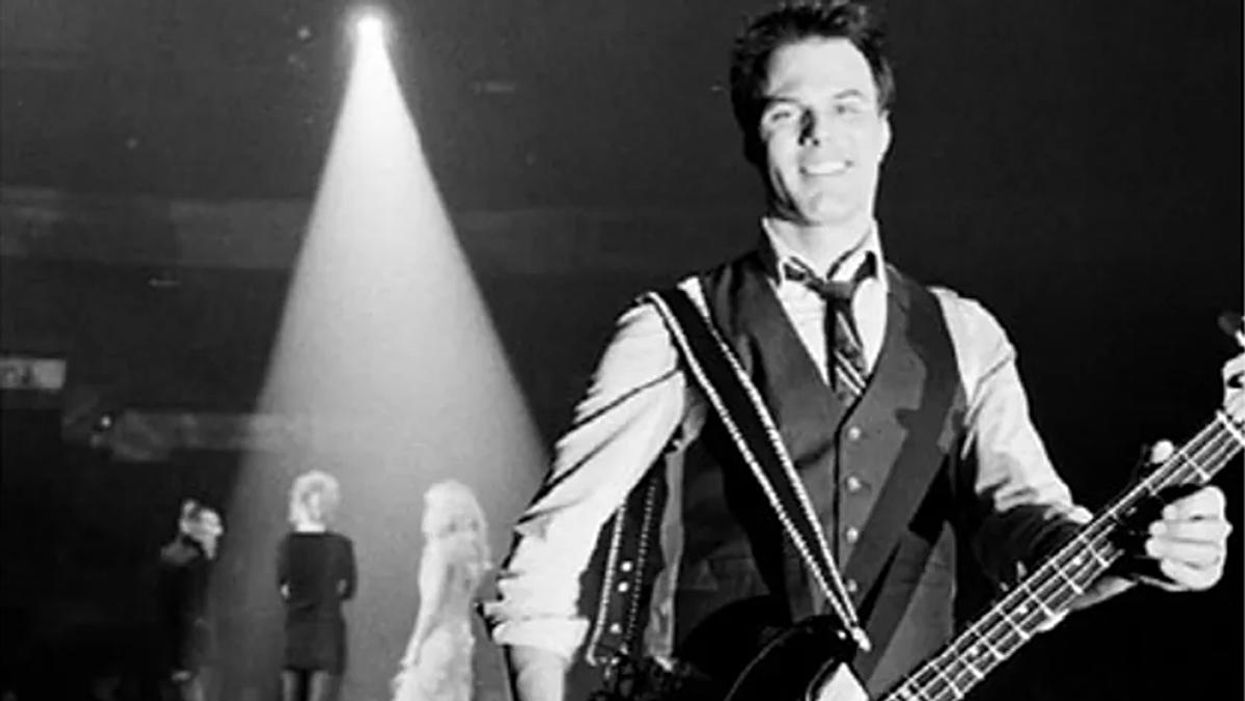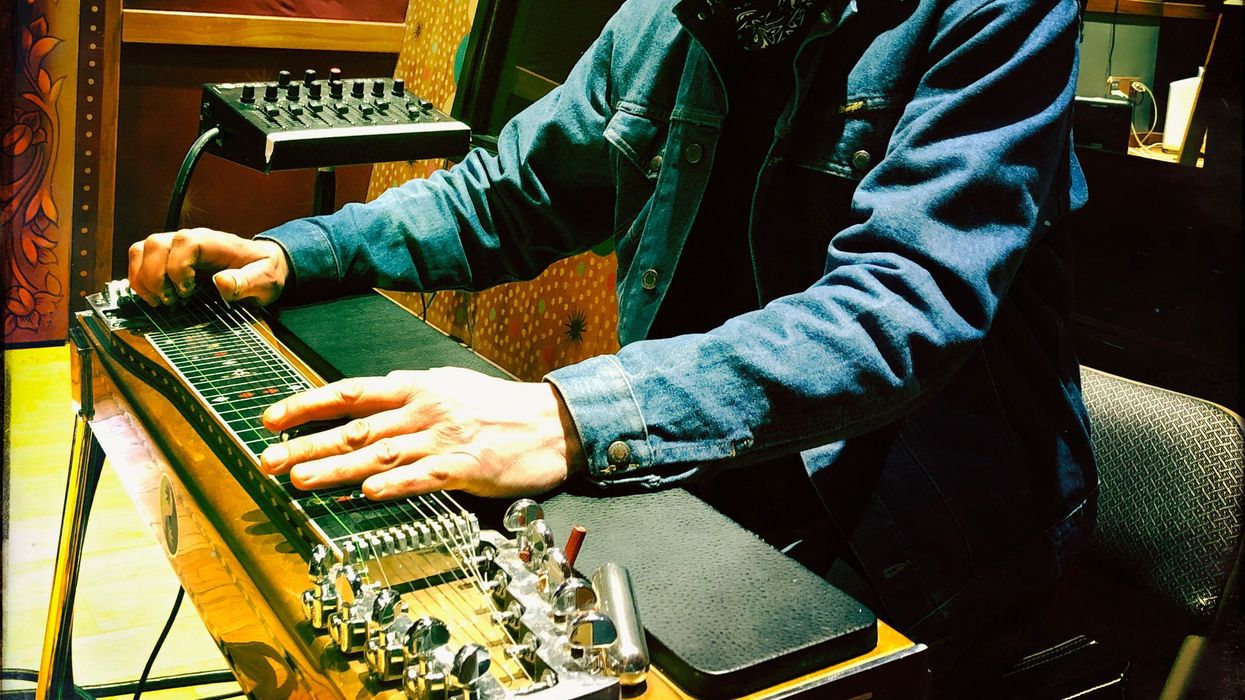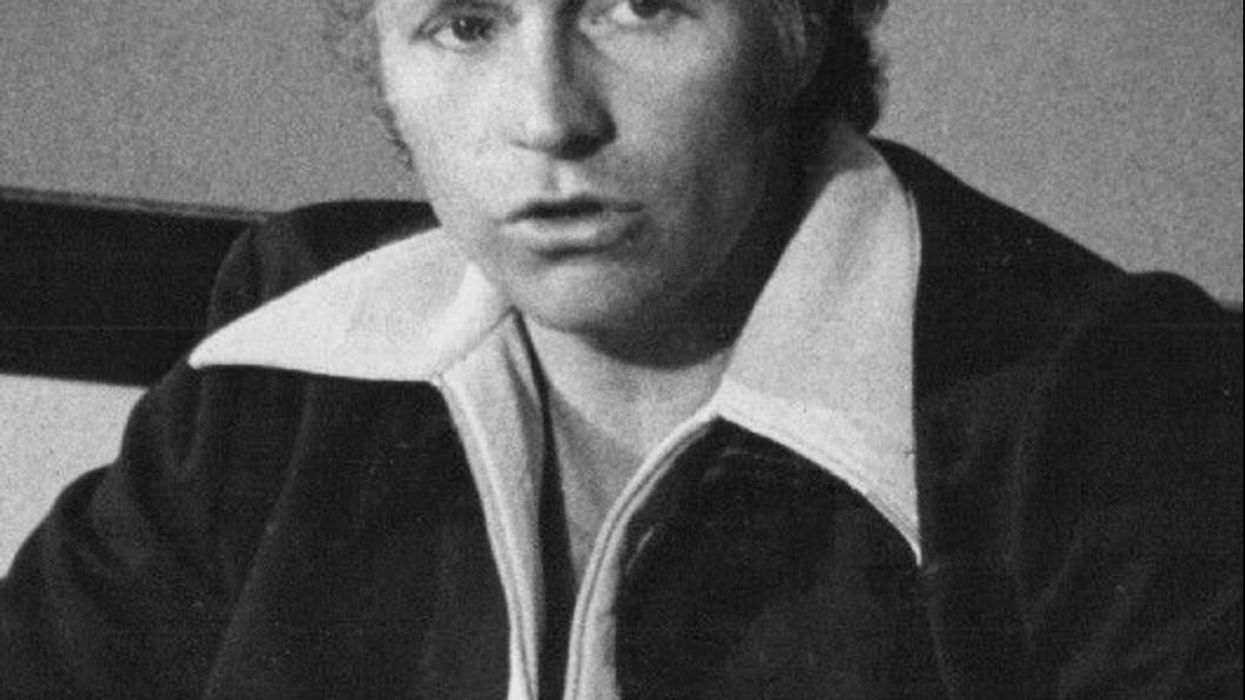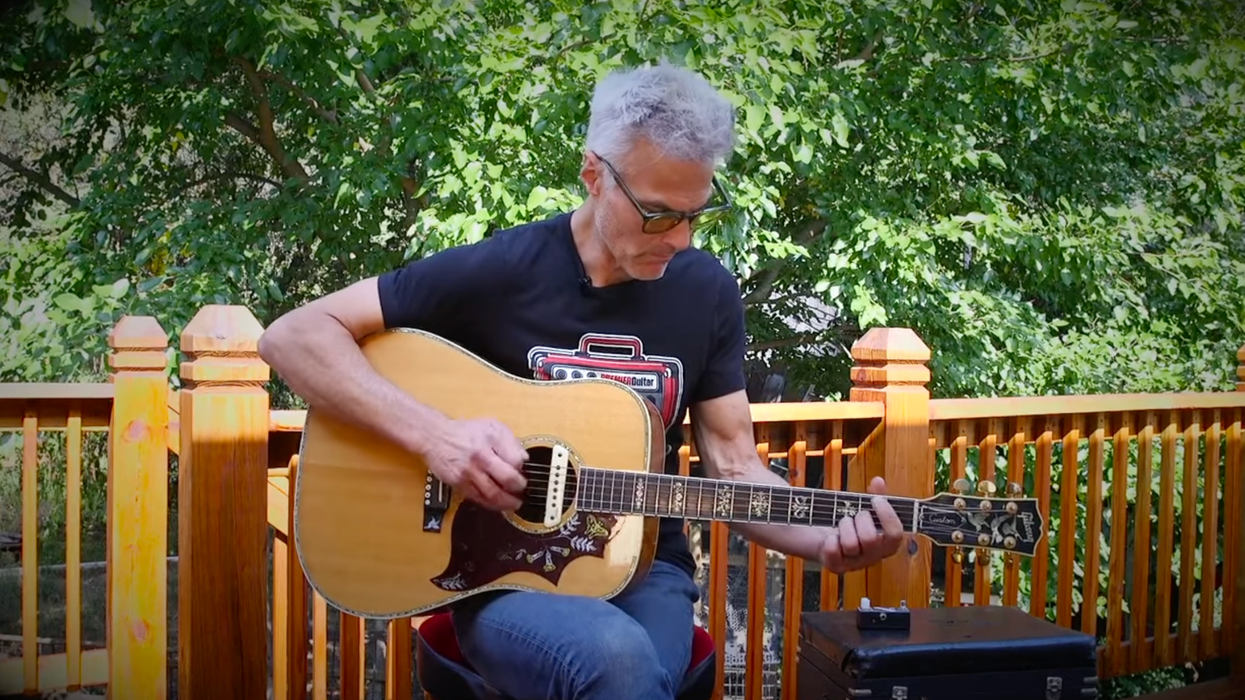In Gwyneth Paltrow's current movie, Country Strong, writer/director Shana Feste wanted as much realism as possible, so she stacked Gwyneth's band with Nashville regulars, including Jim Lauderdale on acoustic, Bucky Baxter on steel, yours truly on bass, and a few other recognizable faces in the country-music scene filling out the rest of the band. The entire gig consisted of us playing a few concerts, with the band faking it onstage to pre-recorded tracks while Paltrow sang live.
Paltrow has a compelling voice and sang really well both live and in the studio. I've worked with many major-label acts that would not have sounded nearly as good under these circumstances. During a break, I asked, "So, if you end up having a big ol' hit song from this movie, would you tour?"
She thought about it for a few beats, then smiled and said, "I really like singing, but . . . I don't know." I appreciated her hesitance, because it revealed a deeper understanding of what it means to be a musician. Paltrow's husband fronts the mega-selling band Coldplay, so she gets it. For most of us, music starts as a quaint hobby. But, like all addictions, it subtly begins to grow under your skin and eventually fuses with your identity.
But, lacking this awareness, many actors see music as a yet-to-be-exploited revenue source. They look at their trophy case and think, "A Grammy and a platinum record would look nice next to my People's Choice and Emmy. I'll just call my manager and have him arrange it." These actors have this incredible, unwavering belief that because they are successful in one area, they can do anything. This kind of self-confidence produces some interesting work.
William Shatner's 1968 album, The Transformed Man, remains one of my desert-island records. To hear him emote with immeasurable conviction, shouting "Mr. Tambourine Man" as if he is teetering on the head of a pin, madness on one side, agony on the other—well, that's just pure Shat. One has to admire his confidence.
Leonard Nimoy's 1968 album, the ironically titled The Way I Feel, does not connect emotionally (which is to be expected from a green-blooded Vulcan), but remains a joy to hear. His somewhat subdued performance and lackluster sales did not prevent him from making another five albums. When it comes to music, the crew of the Enterprise boldly goes where no man has gone before.
David Hasselhoff displays definite Shat-esque confidence with his music, the kind of confidence that enables a man to do a photo shoot wearing nothing but a Speedo, an open leather jacket, a thick mane of chest hair, and a "Come hither" glare. The Hoff enjoyed two No. 1 hits in Germany and just released his 17th album, A Real Good Feeling. For me, hearing the Hoff evokes a real good feeling much like hearing the Shat. Part of that feeling may be envy for their unwavering self-assurance and thick head and body hair. Check out the music of Steven Seagal—it, too, is pure Shat that will make you shiver.
But one can't really applaud the actor/musician who lacks conviction—those of the Paris Hilton, Lindsay Lohan, and Joaquin Phoenix variety. It doesn't matter that they can't sing or rap—plenty of platinum-selling acts can't. But clearly these forays into music began with a PR team hounding the media while pounding the 'net, and then ended in damage control, redirections, and, in Joaquin's case, leaving himself an ambiguous out: If the music career works, great, he's an artist. If not, it's an edgy hoax and you're too stupid to get it.
I admire the actors who, like many of us, love playing music but don't make a big deal out of it. Gary Sinise, a long-time bass player, is a passionate supporter of American troops. He wanted to help, so he started his "Lieutenant Dan Band" and has since performed at military bases around the world. After a lifetime of playing music for fun, Jeff Bridges has started doing shows on the strength of his film Crazy Heart. Nothing heavy or ego driven—just a dude and his friends who put their band back together. I know a couple of the guys who play in Kevin Costner's band. They say it's a fun, no-pressure, feel-good gig—often with excellent catering.
Undeniably, showmanship usually helps a music career. When a musician works the stage, trying to connect with the audience, isn't that acting? I don't think B.B. King is honestly moved by all of his solos, but if you watch his face you'd swear every note slashes a razor across his heart.
As the bard said:
All the world's a stage, And all the men and women merely players; They have their exits and their entrances; And one man in his time plays many parts, His acts being seven ages.
—William Shakespeare, from As You Like It
We may all be acting, but the fact that more musicians have successfully worked in film than actors have successfully launched careers in music suggests that, of the two disciplines, music is more challenging.
[Updated 8/18/21]











![Rig Rundown: AFI [2025]](https://www.premierguitar.com/media-library/youtube.jpg?id=62064741&width=1245&height=700&quality=70&coordinates=0%2C0%2C0%2C0)




